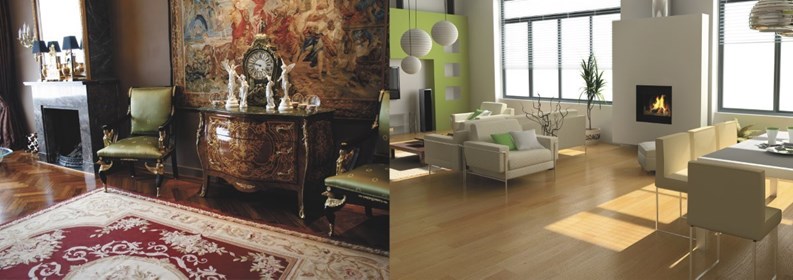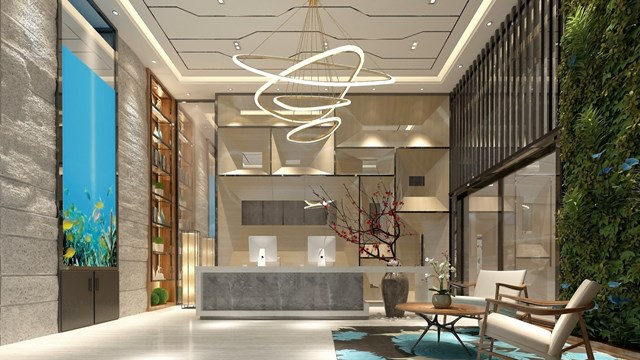Newsflash: many New York and New Jersey interior designers and decorators are busy with projects and clients; remodeling jobs are moving forward and boards and homeowners are spending money again. This might sound crazy, considering that the economy isn’t out of the weeds by a long shot and boards and homeowners alike have sharply reined in their spending in recent years, especially on non-essential home projects. But according to design industry professionals, projects are indeed moving forward—the question is, how?
A New Approach
For most designers, the design jobs of today are much different from the jobs of yesterday, or even just a few years ago. Today, designers say they are working with clients who are more educated, shopping around and comparing pricing and products. They want more bang-for-the-buck and are now approaching larger jobs one section at a time, instead of all at once. The projects are no longer about super-luxury or trendy materials and finishes and more about affordability and classic colors and designs that won’t go out of style in five minutes.
Jonathan Baron of Baron Designs in Manhattan says that work’s been flowing over the last few years. “From 2000 to 2006, there was an enormous amount of new construction of apartment buildings, condos particularly,” says Baron. “So I was busy until 2007, but in 2008, leads on projects just stopped.”
Work picked up again when Baron convinced clients that buildings still needed to be remodeled and redecorated. “The buildings have to function, because the co-op owners have a stake in their buildings,” he says. “So, if the light fixtures are broken or inefficient, the carpet is a tripping hazard, paint is peeling—and it is lead paint—these are all factors that are liabilities for the health, safety and welfare of the inhabitants, staff and guests.”
For Marilyn Sygrove, of Manhattan-based Sygrove Associates Design Group, Inc., many managers and boards did suspend non-essential design projects over the last few years, but she has still kept busy finishing up ongoing projects.
“There were a lot of inquiries, but nothing new was being signed,” she says. “In January, a client finally contracted for a large project that they had been discussing for three years.” Her firm will redesign two 14-story co-op buildings, designing 28 floors, two lobbies and the elevators.
“Some would say it’s hard to justify spending money when people are losing jobs,” says Sygrove, “But you have to spend money to maintain the property values, especially if you are trying to sell.”
Too Afraid to Spend
Don’t be surprised that designers aren’t quite hurting for work—many capital projects are planned well in advance. “A lot of these jobs have been in the queue for years, already earmarked with the money put aside,” says Todd Schwartz of 13th Floor Design Group in Towaco, New Jersey.
He does say that at the beginning of the economic turmoil a few years ago, management and boards put a halt on upcoming projects out of fear alone. “Not that the money wasn’t there, because it was,” says Schwartz. “But the jobs they were doing where they would have had to assess their residents disappeared. It’s impossible to assess owners thousands of dollars for a hallway remodeling project in an economy like this. So that part of the business has directly affected us.”
As a result, says Sygrove, the mentality of the boards and managers had to change—they had to think smaller and more affordable. “The word we’re hearing now is ‘freshening’ which means redesigning a room that’s pretty minimally finished with maybe some new furniture,” she says. “There’s not a lot of new construction.”
Making Smarter Choices
Another new trend is what Schwartz calls “value engineering.”
“This means that the managers and board members are entertaining their contractors’ suggestions for identical, but less expensive, products in lieu of the designer choices. The contractors come in and look at raw materials and ask, ‘Do you really need this $600 fixture when I can get the same fixture for half the price?” he says. “A lot of what you pay for is the name.”
The recession has also forced boards to choose products that aren’t just the trend of the week. Trendy colors come and go. If the lobby in decorated the hue du jour, it may need to be repainted—at a significant cost—once the color falls out of fashion and starts to look dated. To save on the design bottom line, Tina Tilzer, principal of Art & Interiors in Woodbury, says that “Buildings are now turning to more classic and timeless styles so they won’t feel like they have to change it in a few years.”
For her part, Sygrove says she sees her clients choosing more low-to-no maintenance products. For example, instead of a marble floor, an expensive luxury that requires regular maintenance to keep it looking its best, she says that clients choose a porcelain style flooring that only requires some basic mopping. “And that means they're also saving money on the materials they aren’t buying to take care of the material,” she says.
Tilzer also explains that, to save money, many client buildings are no longer doing projects in one phase, but rather in stages. “Management and boards are now thinking more and acting more responsibly,” she says. “The board might approve small upgrades rather than total renovations. They may just change the hardware or have the signage company come in and do touch-ups to refresh the space.”
There are considerations to take into account when a project is done piecemeal however, says Sygrove. You don't wind up saving money if changing or upgrading one thing sets off a domino effect, forcing you to do the next project. “You do what you can afford, and make sure doing it doesn’t open up having to do something else,” she says.
Individual unit owners are also adopting the same piecemeal approach, says Baron. For example, instead of completing a pricey kitchen-and-bath gut remodeling job, they may complete the kitchen one year and the bath another year, or even parts of the kitchen or bath at a time—replacing appliances and then redesigning the floor months later. By not shelling out for the entire project all at once, consumers may feel safer knowing they're not committed to a huge expenditure.
Tilzer’s partner, Sivan Mair, says that boards are also becoming more environmentally conscious with their design projects. “They're doing research and learning how, in the long-term, these changes benefit their pockets more.”
Examples of these design changes include the upgrade and installation of energy efficient fixtures and light bulbs, and the addition of insulation in vestibules and vanes that lower heating and energy.
Small Changes, Big Savings
Smart businesses adapt to economic climate changes, and the design and decorating business is no different. Designers aren’t going to tout expensive fabrics and furnishings if their clients are cutting back. To be able to accommodate all of their clients’ budgets, designers need to stay on top of current products and understand their pricing, as well as being aware of more affordable alternatives to each product.
According to Tilzer, once her firm understands the client’s budget, they consult with a contractor for pricing. To keep up their knowledge of the industry, she and her associates attend commercial and residential design shows and stay on top of new design and product websites.
Sygrove has a vast library of materials, but says she and her staff are continually calling their sales reps to update them on what’s new in the marketplace. “Monday we have a staff meeting, and we invite vendors to come in and show us products every week,” says Sygrove. “We also have an intern librarian who goes through bookshelves of furniture and lighting manufacturing products and calls reps to get updated materials. We’re only as good as the research we do and the products and materials we use.”
Schwartz stays that he stays up-to-date with prices and often points the managers to various websites that sell wholesale and retail, providing them more affordable design options. “Nine out of ten websites have equivalent choices that are a fraction of the price of what they were going to spend,” he says.
One example of a more cost-effective product is carpeting. “It used to be that the heavier the carpet was, the better it was, but today the materials are far superior than they were years ago,” says Schwartz. “So you’re able to do more with less.”
Another is wallpaper. “It comes in different grades, grids and durability,” says Mair. “Wallpaper companies are offering a type that’s for high quantity with much better pricing.
Keep in mind, however, that more expensive doesn’t always mean more durable or better-made, and some designers choose more expensive products because they are more familiar with the company. “The idea is that quality is marked by the reputation of the company,” says Mair. “Nowadays, a lot of the companies with more expensive products are offering cheaper product alternatives. We’d rather go with their cheaper solution than with unknown company names.”
To get a brand new look in a lobby or living room, the best thing you can do is just make a few simple changes. “Make sure all color temperatures and light bulbs are all the same and you may want to put up a new paint color which makes things looks fresh,” says Sygrove. “Replace anything that’s clearly worn—such as a piece of furniture, or buy one brand new piece that will make the lobby look different.”
While there are many options for boards and individuals looking to update or completely change the look of their space in what might seem like a less-than-idea time for such projects, sometimes it really is better to wait. In some cases, says Sygrove, “Depending on the project, putting on a band-aid will cost you more money in the long run, than just waiting to do the job when you have the money.” Consulting with your design professionals, knowing your options, and doing your homework beforehand is the only way to know which route is best for your building.
Lisa Iannucci is a freelance writer and author living in Poughkeepsie, New York.







Leave a Comment